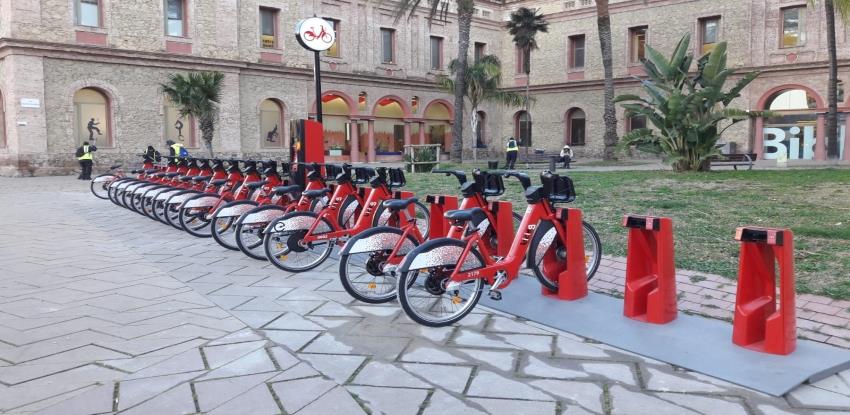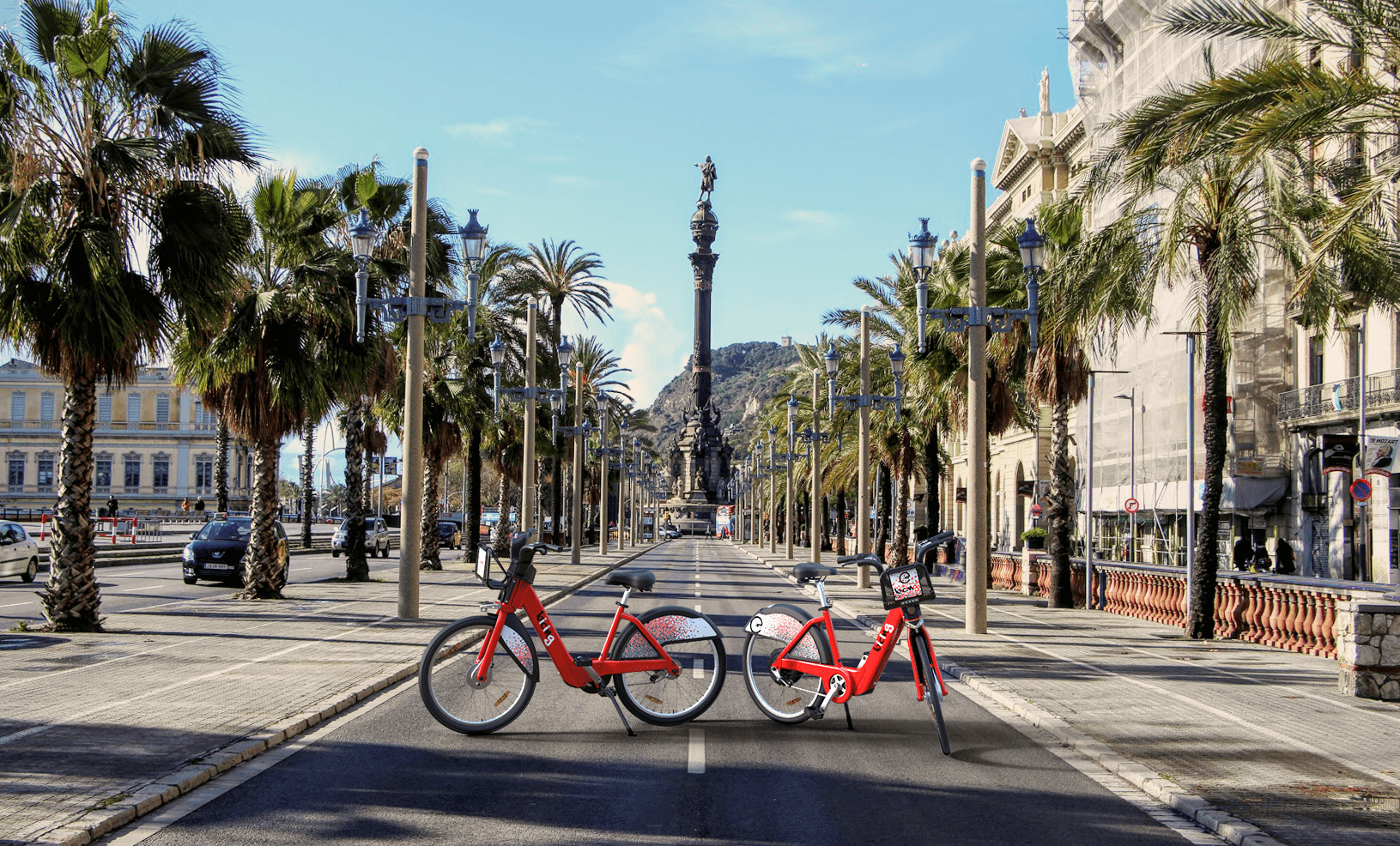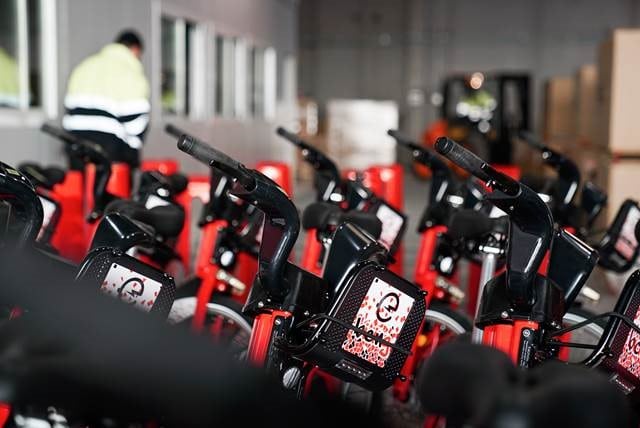
Bicycles Aren't Just for Summer Anymore
Bicycles have become a huge mode of alternative transportation in large cities. It is already a reality in capitals like Madrid, Paris, and Berlin. Barcelona recently kicked off its bike sharing service with a technological, sustainable, efficient model. We’ll share what’s unique about the service and the technology used. The rest: ensuring sustainable mobility that’s committed to the environment in cities.
19 of April of 2019
The transformation of cities and urban mobility is a fact. In 2050, more than two-thirds of the population will live in cities, so if we’re already having problems getting around, just wait and see what’s in store for us. That’s why we must now think, collaborate, co-create, innovate, and adapt. In addition, we are lucky to have community support that is more connected and collaborative, but also more demanding, asking for new solutions.
That’s why cities must give their residents options that complement each other, are digitally and physically connected, and are done in an organized way in order to improve mobility in large cities. In order to achieve that, all the solutions must be organized around three fundamental pillars: they have to be shared (thereby reducing the number of vehicles on the road); they have to be electric (thereby contributing to sustainability and the environment); and they have to be digital (so they are immediately available).

Why is it a good time to go back to bikes?
In the new model of cities and urban mobility, bike-sharing plays a very important role. It lets us make it that “last mile,” that is, from where you leave a car in a parking lot or exit a metro station to your place of work. Besides, it allows these short trips to happen in a healthy, environmentally friendly way.
That’s why, in order for a good bike-sharing system to exist, a set of factors between key participants in the environment have to be taken into account. In the first place, the city must support bicycles and see bike-sharing as another public service, have appropriate infrastructure (bike lanes, stations, etc.), and establish an order between all the systems, little by little generating a biking culture in the city. Likewise, there must be a product, the bike, which has to be high-quality, robust, and safe in order to get the community to use it.
Behind the product, there must be a service, a system operator that is in charge of keeping the bikes, the stations, and everything else in good working conditions, redistributing the bikes appropriately so that the community always has a bike in reach. Lastly, there has to be technology that lets the community reserve and use the bikes easily, quickly, and safely; that lets the system operator know where the bikes are and if they need to be repaired or moved; and that lets the city know through data analysis how its residents are getting around, if the fleet needs to be expanded, if new zones have to be added, etc.
Barcelona, Different Stakes Than in Paris, London, or Madrid
Barcelona’s wager – a bike-sharing service with a station and, for the first time anywhere in the world, a hybrid station where mechanical and electrical bikes can be docked – aims to make an impact on worldwide trends in bike sharing systems in cities. The service in Barcelona was started up in March, through a contract model that includes manufacturing, installation, and operations; unlike London’s model, which only involves operations, or models in Paris and Madrid, which are public-private associations. Revenue depends on a monthly fee subject to other charges, the opposite of the user and publicity fees as in Paris or the single fare like in Berlin.
There will be 7,000 bicycles and 14,000 docks in Barcelona to park the bicycles, distributed over 519 stations, which will form a network that will extend across the whole city, with a radius of 5 minutes between them. We’ll start by installing 1,000 electric bikes in that figure. Additionally, it is a transformable prototype, also a first worldwide, since both bicycles are completely identical, which will let the city attend to the real needs of its users and adapt to them.

Technology, the key to offering a distinguished service for the community
Technology and commitment to new techniques and tools have guided the development of this service in Barcelona.
- The service has a modular station, and it’s not necessary to anchor it to the ground, as it’s stabilized by its own weight and structure, which allows for faster installation. This allows us to reduce the impact on the structure of the city, in addition to the highly aesthetic component of these new stations.
- Another new feature is that we’ve designed a vehicle to transport the bicycles alongside our providers and be able to attend to contract logistics. The vehicle has a 100% electric tractor and a semitrailer with room for 21 bikes. Thanks to it, we’ve managed to improve operations attending to historic neighborhoods, and we’ve improved ways to load and unload it, getting to the point that the trailer is lowered to the ground hydraulically so that workers don’t have to do themselves.
- We will also have a new Computerized Maintenance Management System (CMMS) that will allow us to carry out stock management, station maintenance, and electrical and preventative maintenance for bicycles. This advancement is going to enable us to know which bikes and stations need maintenance through telematics, and they can also do preventative checks at random. This way, we will be able to provide greater security for users and reduce the probability of any breakdowns.
- It will be a high-tech service, where we will have different software enabling contract management. Barcelona will have unified management thanks to COMET, a system that collects all the intelligence from the service (databases of users, bikes, and stations). Additionally, it also makes integration with the payment gateway and email support system (CRM) possible. One of the achievements of this innovative system is that during the transition and systems migration period, service hasn’t been interrupted at any point.
- Furthermore, in the future a new prediction tool will be added to the bikes that are at the stations (BICO) so that users can be guaranteed that bikes, as well as free docks for returning them, will be available at each station. This system, through different patterns, stores daily and hourly usage data to provide the operator with predictions, which will move from station to station depending on the real needs gathered according to the data.

Thanks to the development of new forms of urban mobility such as bike sharing, cities have taken a step forward in terms of the services they offer citizens, reducing pollutant emissions, and offering public transportation. As such, Barcelona is positioned as one of the most innovative cities in the vanguard of this field thanks to its bike sharing system, which will show the exponential growth that bike transportation is experiencing around the world, acting as a support for different mobility systems.






There are no comments yet